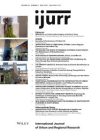The ambition to develop Delhi as a global city is rooted in the liberalization reforms of the 1990s. Parts of the city region were integrated with the global economy, providing international firms with investment opportunities and outsourced services, while the metropolitan area emerged as a significant agglomeration of Export Processing Zones. The development of modern infrastructure, high‐end residential complexes and exclusive shopping malls, in line with the rise of consumerism and middle‐class ideology, has spectacularly transformed the urban landscape. This drive for global competitiveness involving image‐building has had negative consequences, especially for the poor, through ‘cleansing’ the city of slums and other alleged undesirable elements, and has exacerbated socio‐spatial polarization. Delhi’s experience thus exemplifies the problematic implementation of a Western construct — the global‐city model — in a metropolis of the South characterized by strong socio‐economic inequalities as well as the ascent of urban entrepreneurialism and its translation into a ‘revanchist city’. Although Delhi’s trajectory is not unique in this respect, the magnitude of the informal sector combined with the increasing assertiveness of the social groups who have benefited most from the economic reforms provides a context in which the imposition of a new economic model and urban aesthetics generates particularly tangible tensions. What also makes the case of the Indian capital remarkable is the conjunction of structural factors — the overriding power of the state and the decisive intervention of the courts in urban affairs — with an international event — the 2010 Commonwealth Games.
Details
Written by:
VÉRONIQUE D.N. DUPONT
Digital Object Identifier (DOI)
10.1111/j.1468-2427.2010.01027.x
About DOI
Read full article as PDF
Read full article as HTML
See the references for this article
